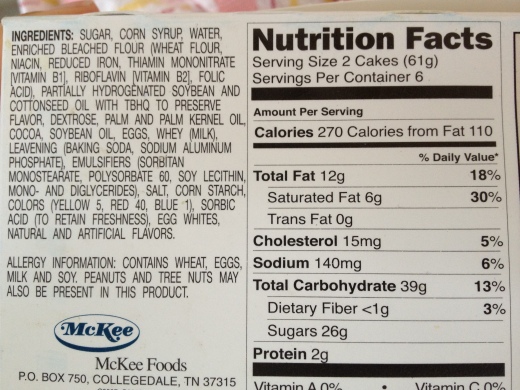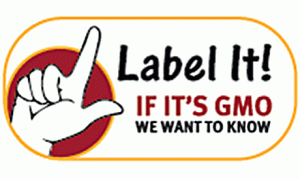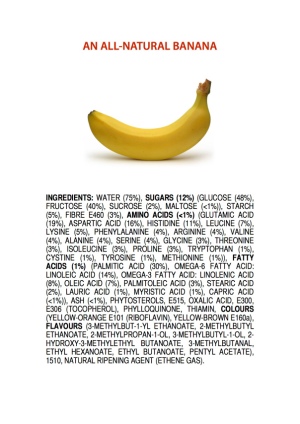Home » Posts tagged 'genetically modified'
Tag Archives: genetically modified
The illogic of GMO labeling
I have been forced to become extremely attentive to the ingredients labels on products I buy at the grocery store. The following randomly-obtained ingredients label has the red flag I look for: cottonseed oil.
 Cottonseed oil, as far as I know, is only a recently-used food ingredient. A side product of manufacturing more conventional uses of cotton (clothing), cottonseed oil has begun finding its way into food products that formerly contained only a variety of other vegetable oils. Frustratingly, a number of labels will say “May contain one of the following: cottonseed oil,…” meaning I often have to put back a product that might not, this time, have what I’m trying to avoid. Presumably, manufacturers use cottonseed oil when it happens to be cheaper than some other oil, which is not necessarily year-round.
Cottonseed oil, as far as I know, is only a recently-used food ingredient. A side product of manufacturing more conventional uses of cotton (clothing), cottonseed oil has begun finding its way into food products that formerly contained only a variety of other vegetable oils. Frustratingly, a number of labels will say “May contain one of the following: cottonseed oil,…” meaning I often have to put back a product that might not, this time, have what I’m trying to avoid. Presumably, manufacturers use cottonseed oil when it happens to be cheaper than some other oil, which is not necessarily year-round.
The reason I’m avoiding cottonseed oil is that I have a daughter who seems to be acutely sensitive to it. We have, at this point, only correlational data: having noticed she gets nauseous after eating something with cottonseed oil in it (along with, of course, any number of other candidate ingredients), we have stopped feeding her those items and noticed the nausea does not occur. When she does get nauseous, we have gone back and checked boxes and invariably we have accidentally fed her something with cottonseed oil in it. This strengthens our evidence, even if it proves nothing. Of course, we’re not out to prove anything, we just want our kid not to feel bad.
The ingredient label above has another interesting feature. At the bottom, under Allergy Information, the product lists not only potential allergens that it does contain, it also lists allergens that “may also be present.” Some people can react to such extremely small concentrations of allergens that can cause death that if the manufacture of non-peanut containing products occurs in the same machines or air space as peanut-containing products, so that there is a small chance of cross-contamination, this possibility is carefully included on the label.
So I’m a fan of labels. I watch them carefully. I’m glad they exist, and I wish they existed too on restaurant menus, so I wouldn’t have to always ask, on my kid’s behalf, “Do you use any cottonseed oil?” It’s especially difficult to have this question answered, partly because cottonseed sensitivity isn’t nearly as well known as nut allergies or celiac disease, and partly because I suspect some restaurants just pour stuff out of some container labeled “oil” and thus have no idea.
 Where I am not a fan of labels, however, is in the movement to force food manufacturers to label products that contain genetically modified foods. Recently, several states had initiatives on the ballot to mandate GMO labeling, but fortunately, in most states the measure was defeated. Recently, I’ve begun to see internet memes “exposing” the fact that certain companies, like Pepsi, spent a great deal of money fighting GMO labeling initiatives, as though such a fact should be important in evaluating whether or not labeling was a good idea. The meme counts on the fact that many people are anti-corporation, as if anything funded by corporations is inherently evil, or inherently to the detriment of the very consumers who generate its income.
Where I am not a fan of labels, however, is in the movement to force food manufacturers to label products that contain genetically modified foods. Recently, several states had initiatives on the ballot to mandate GMO labeling, but fortunately, in most states the measure was defeated. Recently, I’ve begun to see internet memes “exposing” the fact that certain companies, like Pepsi, spent a great deal of money fighting GMO labeling initiatives, as though such a fact should be important in evaluating whether or not labeling was a good idea. The meme counts on the fact that many people are anti-corporation, as if anything funded by corporations is inherently evil, or inherently to the detriment of the very consumers who generate its income.
As it happens, cotton is one of the crops for which genetically-modified varieties are extremely common. However, although I believe my daughter has a cottonseed sensitivity, I do not believe that it makes any difference whether the cotton is genetically modified or not. Indeed, GM cotton is an amazing product which has dramatic potential to increase productivity of farms in India, China, and the United States while reducing pesticide use and causing far less environmental damage than conventional cotton varieties.
GM cotton produces a protein with the scary name of Bt toxin. Despite the word “toxin”, the protein is harmless to humans, but is deadly to caterpillars that destroy the cotton plants. Because Bt toxin is a naturally-occurring pesticide (the transgene that makes GM cotton different from conventional cotton was borrowed from a bacterium), it is also used by organic farmers. Yes, organic farmers may use pesticides (and must use pesticides if they hope to produce enough product to go to market), though they are limited to naturally-occurring varieties. Many anti-GM activists insist that the way organic farmers use Bt toxin is superior to the way it is used in GM cotton, but this position is unconvincing. For instance, one line of argument is that since Bt toxin is usually sprayed on the leaves of the crop, it can be washed off, whereas it can’t be washed off if the plant itself makes the toxin. But since Bt toxin is not dangerous to humans (or anything else outside of some caterpillar and other insect larvae), it is difficult to see why this is an advantage and not a disadvantage. After all, when the toxin is in the plant itself, the only insects that can be killed are those eating the crop. Bt toxin washed off by the rain or blown by the wind during spraying might leave the confines of the farm and kill insects in neighboring areas – such as Monarch butterflies that often deposit eggs on milkweed plants that can grow on the borders of farmland. Furthermore, when a pesticide can be washed off by the rain, it must be reapplied. Reapplication of pesticide requires time, money, and labor, and on a large scale increases pesticide leakage to the neighboring environment and requires more fossil fuels to truck the pesticide to the organic farms. (Add to all that that some organic farmers do inject the toxin directly into the stem – precisely to combat all of these undesirable consequences of topical application!)
But wait, maybe Bt toxin is what my daughter is sensitive to? Well, no, she has no trouble with corn oil – and Bt varieties of GM corn also exist (along with other crops). She also has no trouble eating organic fruits and vegetables, which no doubt have been sprayed with Bt toxin. No, whatever is making my daughter sick to her stomach isn’t Bt. It’s presumably associated with one of the other 40,975 genes in a cotton plant, most of which are genes that are shared by conventionally-grown cotton.
A product should list its ingredients. The ingredients of the product whose label is shown above includes the ingredient cottonseed oil. Cottonseed oil is the ingredient. Bt toxin is not an ingredient. The 40,000 other proteins made by the cotton plant are not the ingredient. (Actually I’m not even sure if Bt toxin is produced in the seed of the cotton, it may for all I know only be produced in the leaves eaten by caterpillars – it doesn’t matter for this argument)
 In fact, if you want to play the game of listing all the ingredients of the ingredients (so to speak), then prepare yourself for labels such as the all-natural banana shown to the right. (This brilliant poster was made by James Kennedy, a no-doubt inspirational science teacher.) Of course, if we really want all the genes listed, even this banana graphic only scratches the surface of what would go on the label.
In fact, if you want to play the game of listing all the ingredients of the ingredients (so to speak), then prepare yourself for labels such as the all-natural banana shown to the right. (This brilliant poster was made by James Kennedy, a no-doubt inspirational science teacher.) Of course, if we really want all the genes listed, even this banana graphic only scratches the surface of what would go on the label.
Understand, this is an all-natural “organic” banana. But what exactly is an all-natural “organic” banana? You might be forgiven for believing, as most people do, that the organic banana is identical to the banana our paleolithic ancestors ate in between Mastodon kills. It’s the same banana, you might insist, that Adam and Eve munched on in the Garden of Eden before regrettably turning to the apple.
But no, today’s banana bears no resemblance to the banana of 15,000 years ago. Nature’s banana is a disgusting thing, about a third the size of an organic farmer’s banana and containing far more inedible seeds than fruit pulp. (Indeed, the same is true for virtually every other common staple crop in the average human diet.) The bananas we eat are Frankenfood monstrosities with 3 copies of their genome, which renders them unable to produce seeds. The bananas we eat have also been selectively bred to be larger and to remain edible over a longer period of time. This isn’t a consequence of what is usually called  genetic modification (GM), it’s a product of conventional farming techniques developed over hundreds of years that may be happily employed by organic farmers. Nobody labels these fruits as Frankenfood monstrosities with an odd number of genome copies (boo!), but they are far weirder from a biological perspective than Bt cotton.
genetic modification (GM), it’s a product of conventional farming techniques developed over hundreds of years that may be happily employed by organic farmers. Nobody labels these fruits as Frankenfood monstrosities with an odd number of genome copies (boo!), but they are far weirder from a biological perspective than Bt cotton.
There are, incidentally, GM varieties of banana. One could argue that they were invented to fix what conventional farming had screwed up about the banana. Precisely because making an edible banana (conventionally) is such an unnatural process, almost all of the banana varieties consumed in the early 20th Century shared a single genetic background – a monoculture with no genetic diversity. One of the great liabilities of monoculture is that pathogens that destroy any one member of the species could easily wipe out the entire species. GM varieties of banana are attempts to provide the plant with resistance to pathogens (e.g., fusarium wilt) that conventional breeding practices created vulnerability to.
People argue that food should be labeled because “we have a right to know what we’re eating.” I don’t deny the premise, but I do have a problem with the definition of the word “what”. “What” we are eating is cottonseed oil, bananas, peanuts, wheat, corn, and so on. Those are the ingredients. Whether those ingredients are the inedible things nature gave us 15,000 years ago, or are the products of selective breeding, mutagenesis, or transgenics, is irrelevant. Those adjectives are not whats they are hows. The ingredient isn’t “GM banana”, the ingredient is “banana”.
Am I just quibbling here? If a product is labeled “contains bananas”, then we know “what we’re eating” – we know the ingredient in our food. If we’re allergic to bananas, we can avoid it. If we’re trying to avoid sugar intake, we can avoid it. If we’re low on potassium, we can consume it.
If the product is labeled “Contains GMO” we have learned exactly nothing about what’s in our food. A conventional banana and a GM banana are about 99.99% identical, and they are identical in all the ways that count for deciding whether or not to eat it. A GM banana and GM cottonseed oil, in contrast, are nothing alike. Therefore the label “contains GMO” tells me nothing informative. Decisions about cottonseed oil and bananas have nothing to do with one another. If you are sensitive to cottonseed oil it predicts nothing about your sensitivity to bananas. If you are sensitive to cottonseed oil that happens to have been derived from GM cotton, it predicts absolutely nothing about how your body will react to GM banana. That’s because GM is not an ingredient, it’s a process.
Well, you might still argue, people have a right to know about process. Really? Okay, lets do that. I want to know which organic pesticides have been applied to my organic bananas. I want to know if it was applied to the leaves or injected into the stem. I want to know if it was grown in Spring or in Summer. Carried by truck or by boat. Picked by hand or by machine. I want to know if the machines used to power the warehouse it was housed in used electricity from coal-fired power plants or nuclear power plants or (I hope I hope I hope) solar and wind power stations. These are all processes to, and they have about as much impact on ingestive decisions as whether the seed the plant was grown from made use of transgenic technology or not.
Of course, if you really insist on your right to act on your non-scientific fear-based prejudices, even still there’s a better solution. Any number of for-profit groups will happily brand a product as organic, and if you want to trust them, then you can trust them. You can buy anything with a GMO-free or Organically Grown sticker on it and rest assured that the only unnatural techniques used in their cultivation were the unnatural techniques used in the late 1980s or before.
